2018 Triumph Tiger 800 Vs Tracer 900 Video Review
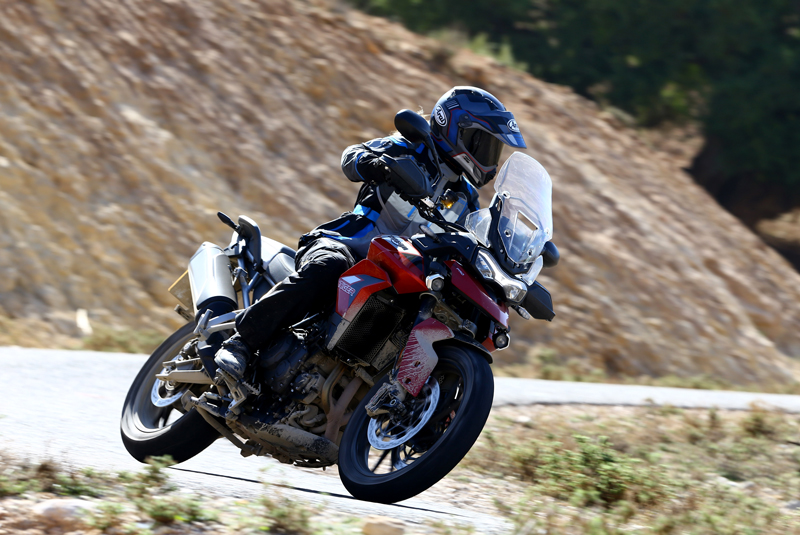
There was a lot to similar most Triumph's Tiger 800 when it was first released in 2011 in two variations, a standard street-oriented model and an off-road 90 variant. As a route-going middleweight ADV tourer the Tiger 800 was formidable and competent, merely its rev-happy 799cc triple and tall gearing, especially in first, hobbled its off-road capability, despite numerous changes and adjustments made over the side by side 8 model years. The classification of the ever-expanding lineup got disruptive as well — what's the difference betwixt the XRx and XRT once more?
Read our Road Exam Review of the 2011 Triumph Tiger 800 hither.
Read our Road Test Review of the 2018 Triumph Tiger 800 XCA here.
Ad
Thankfully, in add-on to a complete overhaul (including a bump in displacement to 888cc — hence the new 900 designation), Triumph has simplified the model names of its five-member 2020 Tiger 900 family. There'due south the street-oriented, bandage-wheeled base model, plus GT and GT Pro variations of it, and the dirt-oriented, tubeless spoke-wheeled Rally and Rally Pro. Later spending two and a half days riding the GT Pro and Rally Pro at the press launch in Kingdom of morocco, information technology's clear that these littermates are actually two very different animals, indicative of each one'south improvement in specializing in its unique mission.
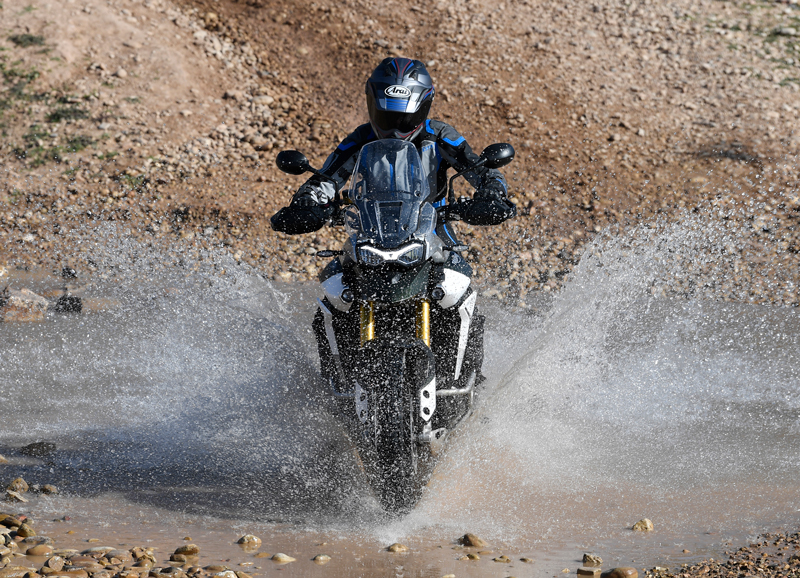
All five models share the core changes for 2020, encompassing the engine, chassis, suspension, brakes and electronics. Outset up is the DOHC, four-valve-per-cylinder, Euro v-spec in-line triple, bored out from 74 to 78.0 x 61.9mm and featuring a new "T-plane" triple crankshaft (a first in the motorcycling world, near equally nosotros tin tell) and a new firing order that bestows the triple with V-twin-like character down low while maintaining its top-end ability.
Starting and revving the 2 engines (in a 2019 Tiger 800 and 2020 Tiger 900 GT Pro) back-to-back, the difference in sound is undeniable, and from the saddle the new 900 has low-terminate grunt information technology previously lacked; Triumph claims a 10% increase in height torque and up to 12% more than midrange horsepower.
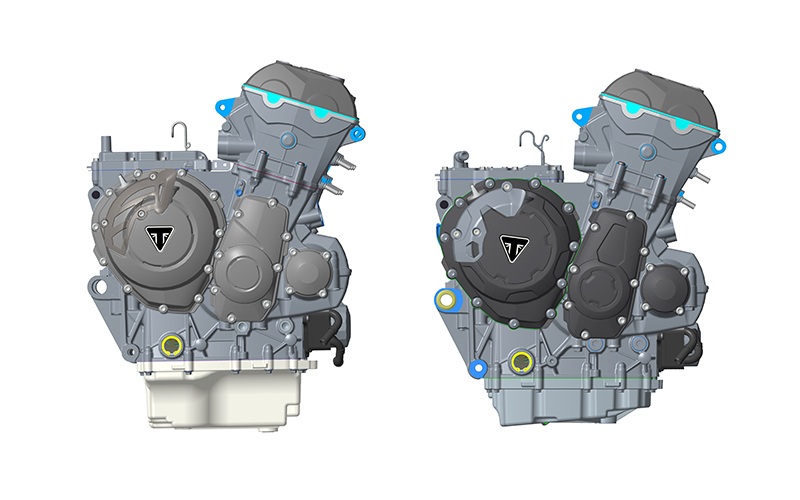
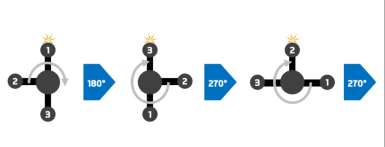
Other engine changes include new Nikasil-plated Siamese aluminum cylinder liners, new camshafts, a new balancer shaft for the new firing society, new pistons and con rods, reduced oil volume and lightweight magnesium engine covers. Overall Triumph says the powertrain is v.v pounds lighter than before, and thanks to a new carve up radiator that reduces heat blown onto the rider'southward leg (a common complaint with previous-gen Tiger 800s) and improvements to the sump blueprint, the engine sits one.vii inches lower in the frame and is tilted half dozen.eight degrees further frontward than earlier, for a lower center of gravity and increased ground clearance.
Contributing to the new Tiger's overall weight loss is a new, lighter tubular steel chassis that includes a bolt-on aluminum subframe and pillion footpeg brackets. Triumph's claimed dry out weight figure for the 2020 Tiger Rally Pro is 443 pounds…add nigh 32 pounds for a full 5.iii-gallon gas tank plus other fluids and the new model is considerably lighter than the 505-pound Tiger 800 XCA we tested in 2018.
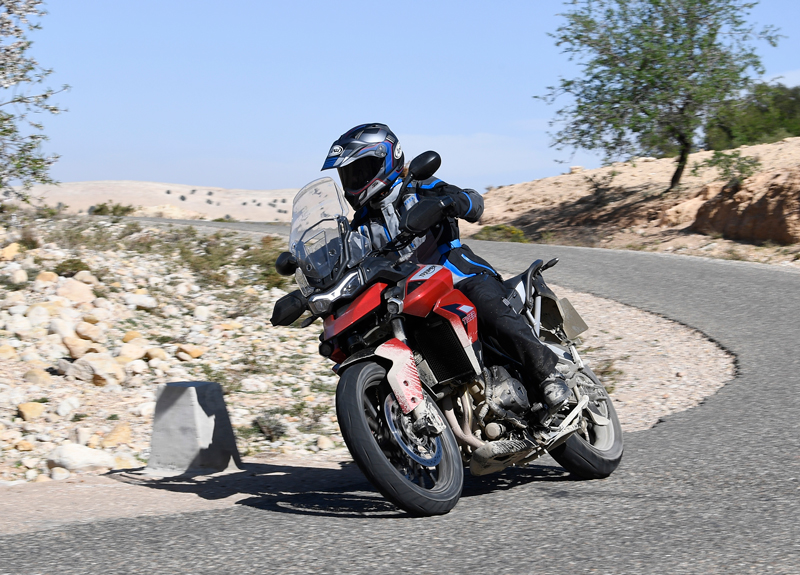
Autonomously from the engine, the other major updates are to the intermission and brakes across all five Tiger 900 models. The street-oriented variants (base model, GT and GT Pro) get a 45mm USD Marzocchi cartridge fork with 7.1 inches of travel, not-adjustable on the base of operations model and adaptable for compression and rebound damping on the GT and GT Pro, and a rear 7-inch-travel Marzocchi shock with manual preload adjustment on the base model, full manual adjustment on the GT and electronic preload and rebound damping adjustment on the GT Pro. Iv preload settings are available for the GT Pro's electronic rear shock — passenger, rider + luggage, rider + pillion and rider + pillion + luggage — and damping adjusts based on the selected riding mode. More on those below.
The Rally and Rally Pro models become a fully adjustable 45mm USD Showa fork with 9.4 inches of travel and a Showa rear stupor adjustable for preload and rebound damping, with ix.i inches of travel. Swapping back and forth between the GT Pro and Rally Pro during our on-road photograph stop, where we rode the same set of corners multiple times, was like riding two completely different motorcycles. The GT Pro, with its xix-inch front end wheel and shorter interruption, is lower and sportier, while the Rally Pro, rolling on a 21-inch front bicycle, feels like the taller adventure cycle that information technology is — not difficult to handle, simply softer and more plush when pushed hard in the turns.
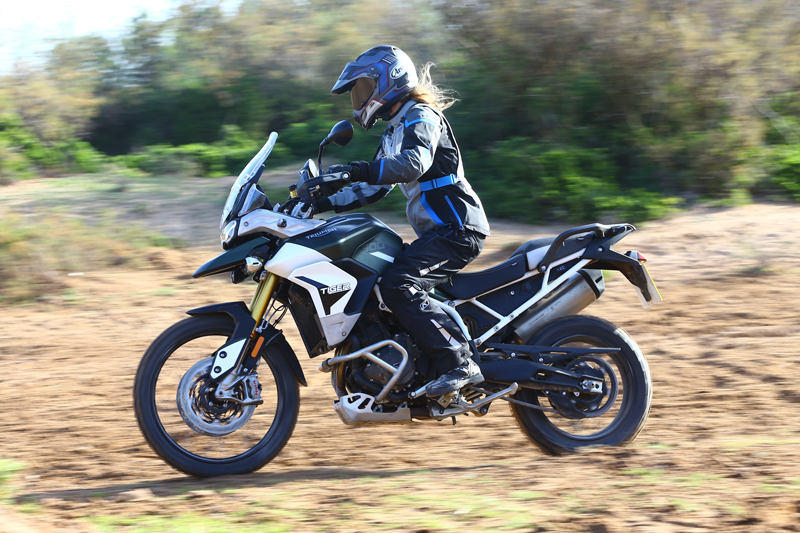
Notably, all v models, including the base model, get top-of-the-line Brembo Stylema front calipers, ordinarily only establish on flagship-level superbikes, with larger 320mm front discs and a new radial forepart master cylinder. The base of operations model includes ABS, while the other iv have cornering ABS with three settings: Road, Off-Road and Off.
The cornering ABS, as well as the balance of the Tiger 900's electronics, is based around a Continental five-centrality IMU that offers upward to 6 riding modes, each with total power and various throttle response maps and ABS and traction command settings. The base of operations model Tiger 900 gets Pelting and Road modes only; the GT and Rally add on Sport and Off-Road. The GT Pro also adds a rider-configurable mode, and the Rally Pro adds Off-Road Pro, which shuts off ABS and traction control entirely and uses a dedicated off-road throttle map. By contrast, the regular Off-Road fashion available on the GT, GT Pro and Rally maintains light ABS intervention on the front bike and controls rear wheel spin, fine for basic dirt or gravel roads but a liability in sand or when climbing steep, loose hills.
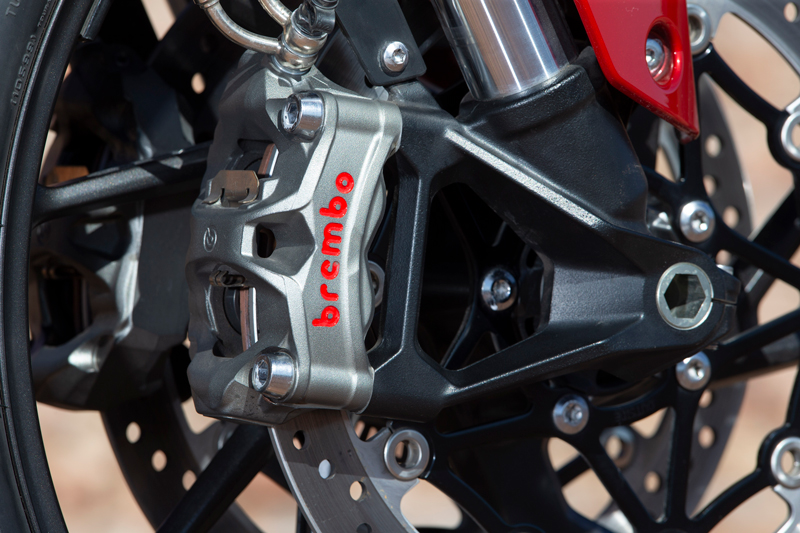
We rode the Rally Pro on our full twenty-four hour period of off-road testing in Morocco, and later briefly experimenting with Off-Route fashion, I spent the rest of the mean solar day in Off-Route Pro, enjoying the more direct connection I felt with the bicycle. The new Showa suspension was a revelation: plush and responsive, and information technology seemed to become meliorate the faster we pushed. Even for this novice-to-low-intermediate ADV rider, the new Tiger 900 Rally Pro was confidence inspiring and remarkably easy to handle on the crude, loose, often-sandy Moroccan trails.
Throttle response was linear and not at all snatchy, and I even felt comfortable enough to purposely break the rear end loose at times in a power slide — something I've never wanted to attempt on a big adventure wheel in the past. Triumph had spooned a set of chunky Pirelli Scorpion Rally tires onto the tubeless spoked rims, which certainly contributed to my confidence; street-oriented Pirelli Scorpion Trail IIs are equipped as standard.
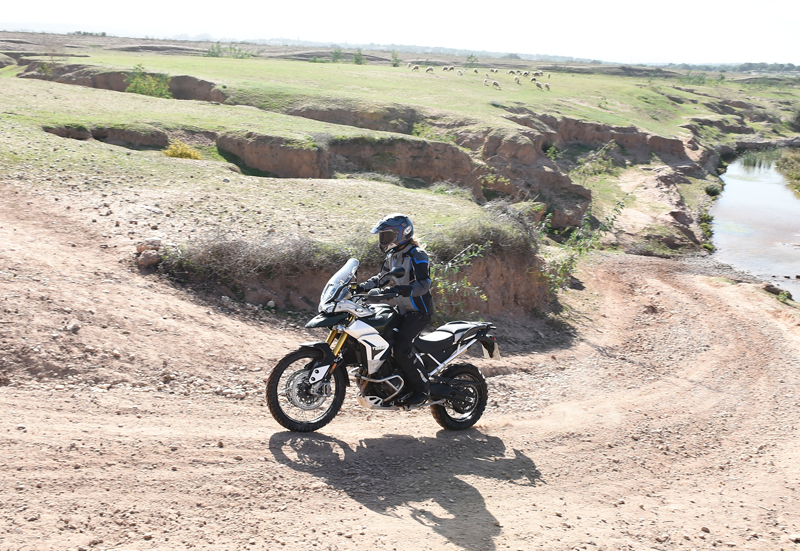
I also found the Rally Pro to exist surprisingly comfortable for stand-up riding. I'grand 5 feet, 9 inches, and its low, frontward footpegs (they're a tad farther back on the base of operations model, GT and GT Pro), new narrower waist and handlebar that'due south now nigh half an inch closer to the passenger balanced me in a natural standing position that kept my arms relaxed and body upright. Dropping the seat into the lower of its two positions (33.5/34.two inches) and dialing some sag into the pause also let me go the toes of both feet on the basis, or 1 whole foot with a pocket-size weight shift.
Getting to the off-road riding required 200 miles of on-road adventure though, and in Morocco the emphasis is on "gamble." Triumph figures most buyers will aim to take these bikes onto the less-beaten path, and the street-oriented GT Pro we rode was up to the challenge. With its seat in the higher of two positions (31.9/32.vii inches — a depression ride height variant of the GT is available with a 29.9/30.vii-inch seat) and the windscreen, easily adjustable with one mitt, in the highest of its five settings, I sabbatum in a buffet-less pocket of air, feeling only a bit of flow on my shoulders and arms.
Advertisement
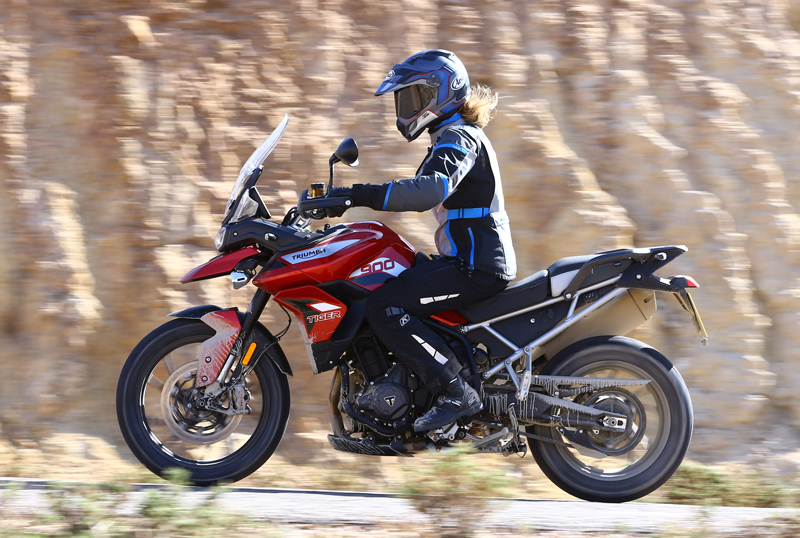
Jenny's Gear
Helmet: Arai XD4
Jacket: Klim Artemis
Pants: Klim Altitude
Boots: Sidi Gamble Gore-Tex
The Marzocchi suspension soaked upwardly the many pavement irregularities, including 1 stretch of packed gravel topped with a light coating of mud, withal was confidently sporty when we hit the twisty foothills of the lower Atlas Mountains. Thank you to its new rest shaft, the T-plane crank 900 proved to be just as smooth as I remember the old 800 to be, with no buzziness in the pegs, grips or seat, and just a pleasant growl at idle.
Apart from the minimally-equipped base model, all Tiger 900 models include a wealth of touring creature comforts: a seven-inch full-colour TFT display (with Bluetooth connectivity on the GT Pro/Rally Pro), heated grips, prowl control, hand guards and a 12V charging plug. The GT Pro and Rally Pro add a quickshifter, LED fog lights, a centerstand, a tire pressure monitoring system and heated rider and pillion seats. The Rally Pro also includes engine protection bars and an aluminum sideslip plate. Pricing starts at $12,500 for the base of operations model Tiger 900, with the GT Pro coming in at $16,200 and the pinnacle-line Rally Pro at $sixteen,700.
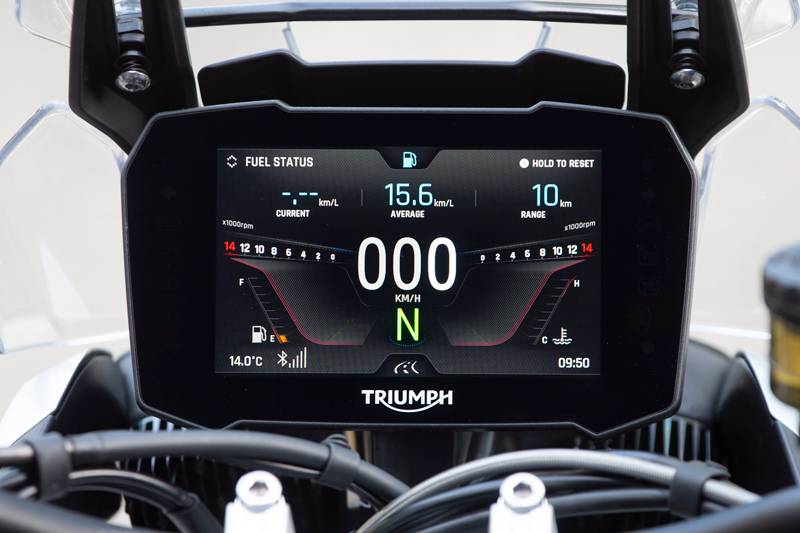
So just like dorsum in 2011, there's a lot to similar about the new litter of Tiger 900s — more than always, if y'all ask us. They're more capable and mission-specific, and gear up to throw down the gauntlet in the popular middleweight ADV band. As soon every bit nosotros get our hands on a tester here in the U.S. you can look forrad to a more in-depth exploration of these new Tigers' capabilities.
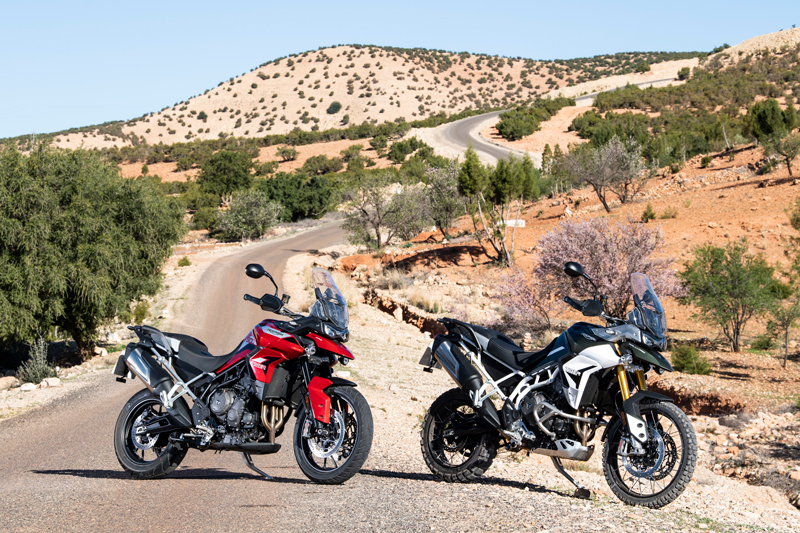
2020 Triumph Tiger 900 Specs
Base Price: $12,500
Price as Tested: $16,200 (GT Pro)/$16,700 (Rally Pro)
Website: triumphmotorcycles.com
Engine Type: Liquid-cooled, transverse in-line triple, DOHC w/ 4 valves per cyl.
Displacement: 888cc
Diameter 10 Stroke: 78.0 x 61.9mm
Transmission: 6-speed, hydraulically-actuated wet assist-and-slipper clutch
Terminal Drive: O-ring chain
Wheelbase: 61.3 in. (GT Pro)/61.1 in. (Rally Pro)
Rake/Trail: 24.6 degrees/5.25 in. (GT Pro)/24.4 degrees/5.74 in. (Rally Pro)
Seat Acme: 31.nine/32.7 in. (GT Pro)/33.5/34.ii in. (Rally Pro)
Claimed Dry out Weight: 437 lbs. (GT Pro)/443 lbs. (Rally Pro)
Fuel Capacity: 5.3 gals.
MPG: NA
Source: https://ridermagazine.com/2020/02/18/2020-triumph-tiger-900-gt-pro-and-rally-pro-first-ride-review/
0 Response to "2018 Triumph Tiger 800 Vs Tracer 900 Video Review"
Kommentar veröffentlichen